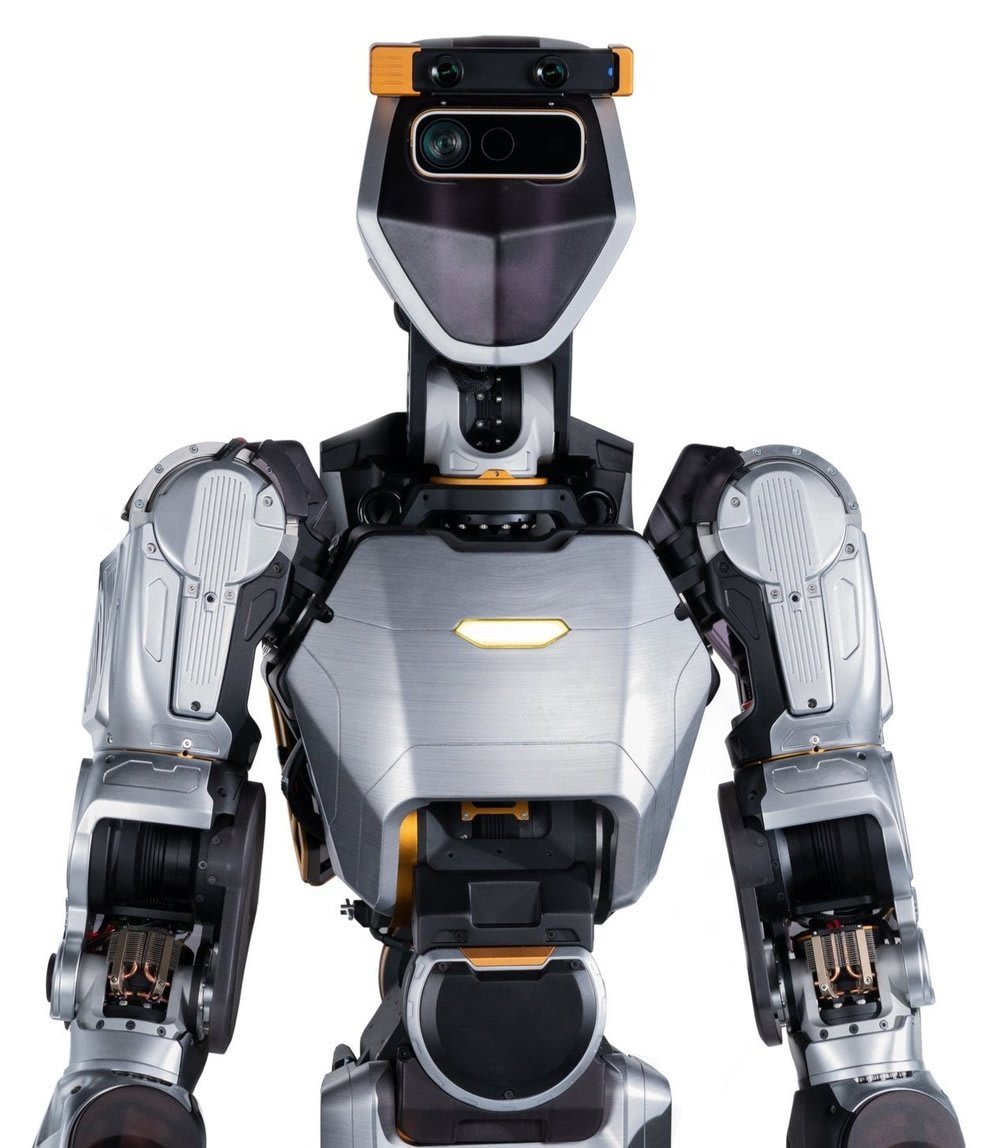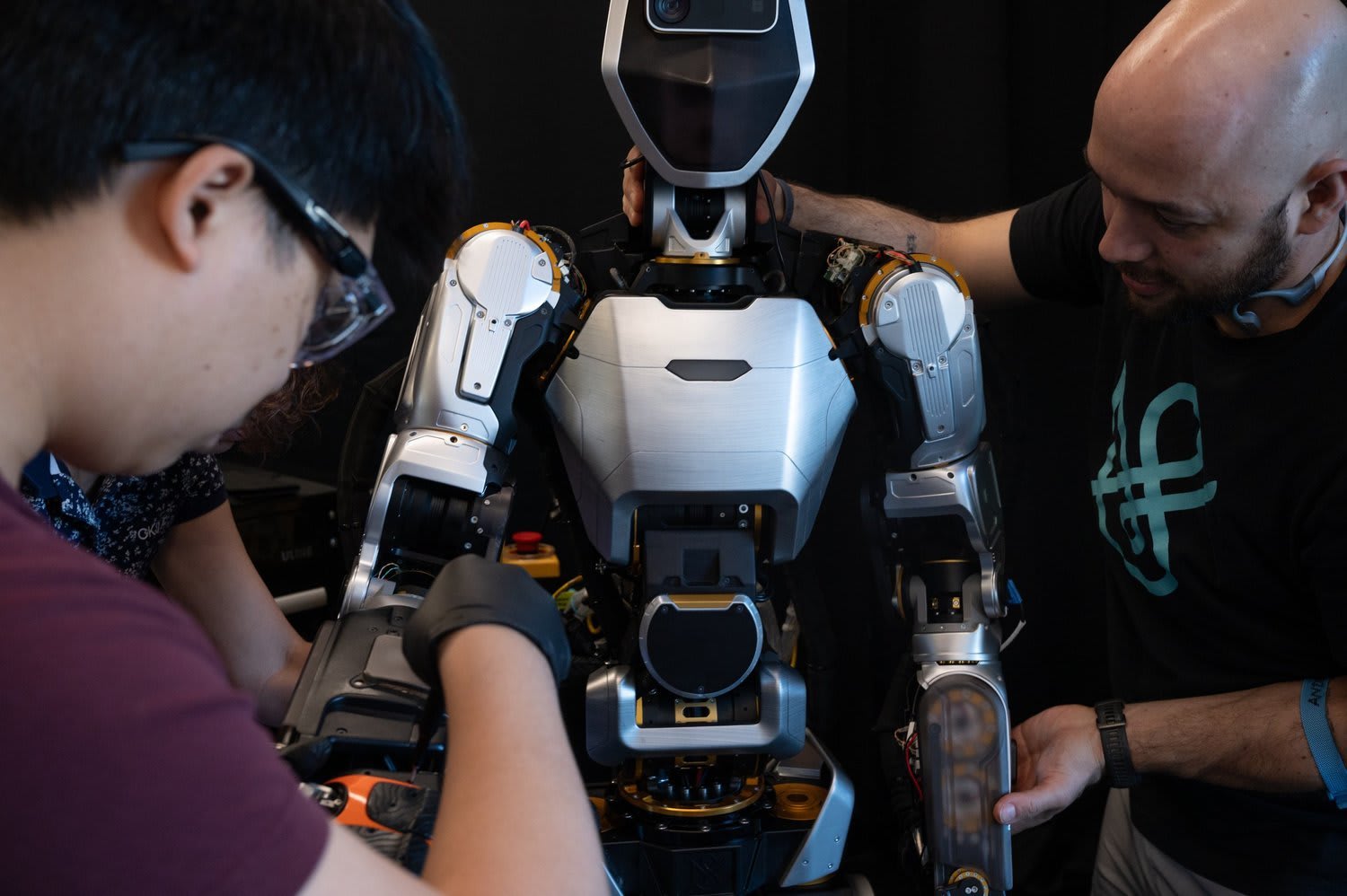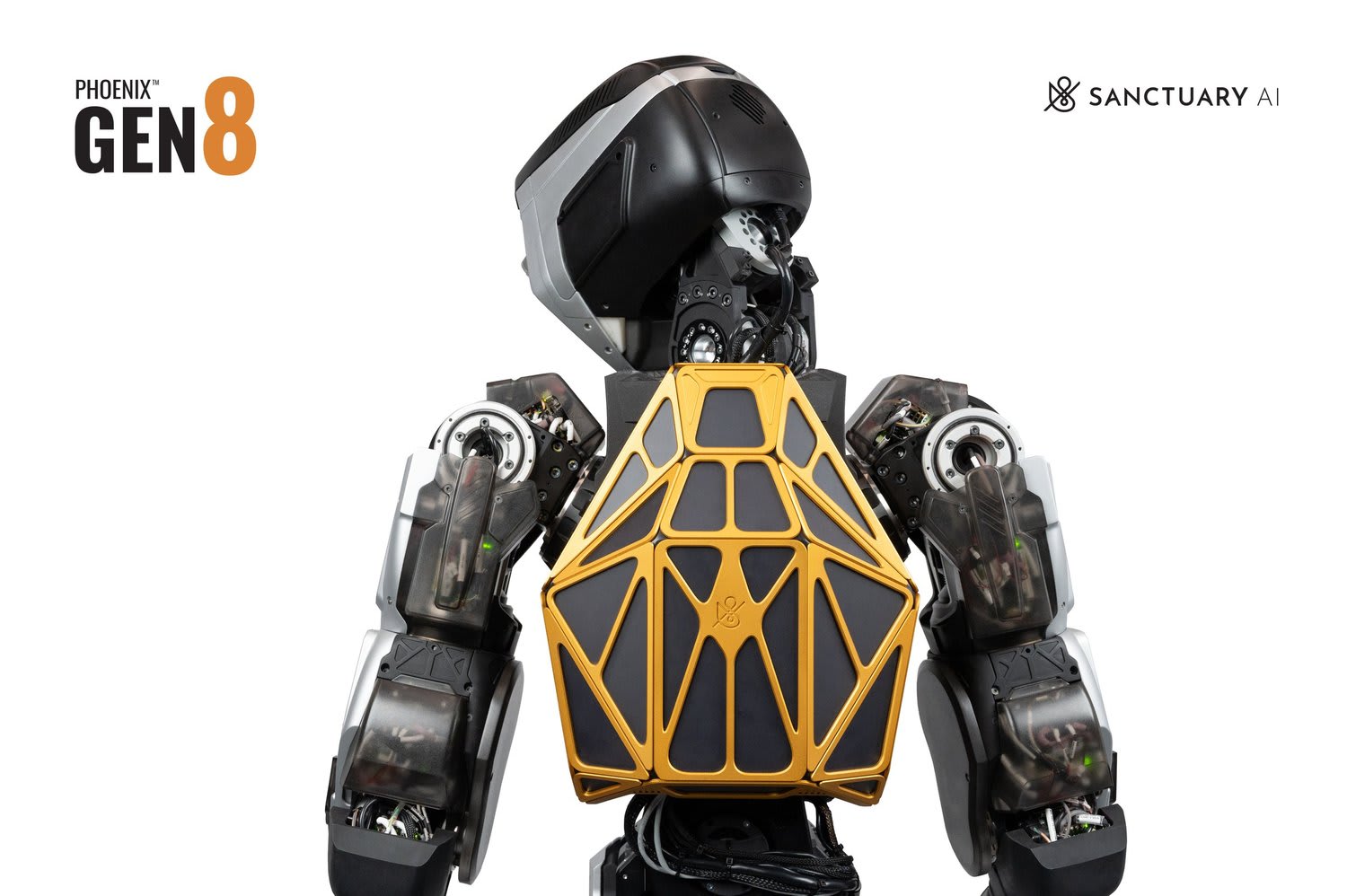Phoenix
Phoenix is Sanctuary AI’s groundbreaking humanoid robot designed to revolutionize human-robot collaboration. With human-like dexterity, advanced perception, and robust AI, Phoenix can operate in complex environments including manufacturing floors, healthcare facilities, and service industries. It can perform delicate tasks, heavy lifting, and interact naturally with humans. Its design aims to reduce human workload in hazardous or repetitive tasks while ensuring safety and precision. Phoenix’s learning capabilities allow it to adapt to new environments, making it a versatile asset for future-forward workplaces.
Robot Specifications
- Key FeaturesKey Features
- Top Features
- Other Features
Runtime
4
Weight
70
Cloud Integration
Yes
Carrying Capacity
12.5
Charging Time
4 hours
Battery Pack
3.5 kWh
Battery Life
5 years
Warranty Info
2 years
Dimensions
170 x 55 x 60
Speed
5 km/h (1.34 m/s)
Compatible Devices
Alexa, Google Home
Connectivity
Wi-Fi, Ethernet, 5G
App Integration
Sanctuary AI Control App
User Interface
Voice command, touchscreen
Available Colours
Metallic silver, matte black
Available Countries
Canada, United States, United Kingdom, Germany, Japan, South Korea
Sensors
LiDAR, stereo cameras, force-torque sensors, IMU, tactile sensors, high-resolution cameras, proprioceptive sensors
Image Gallery
Below images are from Sanctuary AI (Canada)'s official sources




Review Videos
Watch expert reviews and demonstrations of this robot
More Humanoid Robots
Discover more robots in the same category

Astribot S1
humanoid

GR-2
humanoid

AgiBot A2
humanoid

Martian
humanoid

Q5
humanoid

D7
humanoid

ALLEX
humanoid

Dex
humanoid

Astribot S1
humanoid

GR-2
humanoid

AgiBot A2
humanoid

Martian
humanoid

Q5
humanoid

D7
humanoid

ALLEX
humanoid

Dex
humanoid

Astribot S1
humanoid

GR-2
humanoid

AgiBot A2
humanoid

Martian
humanoid

Q5
humanoid

D7
humanoid

ALLEX
humanoid

Dex
humanoid

Astribot S1
humanoid

GR-2
humanoid

AgiBot A2
humanoid

Martian
humanoid

Q5
humanoid

D7
humanoid

ALLEX
humanoid

Dex
humanoid

Astribot S1
humanoid

GR-2
humanoid

AgiBot A2
humanoid

Martian
humanoid

Q5
humanoid

D7
humanoid

ALLEX
humanoid

Dex
humanoid
Robots From Other Categories
Discover complementary robots from different categories that work well together

Skydio X2D

DJI Mini 5 Pro

Skydio R10

IZI Mini X Nano Fly More Combo 4K Drone

Laseron S9 Pro+

3i S10 Ultra

Xiaomi Mi Robot Vacuum-Mop 2 Ultra

Narwal Freo Z Ultra

Skydio X2D

DJI Mini 5 Pro

Skydio R10

IZI Mini X Nano Fly More Combo 4K Drone

Laseron S9 Pro+

3i S10 Ultra

Xiaomi Mi Robot Vacuum-Mop 2 Ultra

Narwal Freo Z Ultra

Skydio X2D

DJI Mini 5 Pro

Skydio R10

IZI Mini X Nano Fly More Combo 4K Drone

Laseron S9 Pro+

3i S10 Ultra

Xiaomi Mi Robot Vacuum-Mop 2 Ultra

Narwal Freo Z Ultra

Skydio X2D

DJI Mini 5 Pro

Skydio R10

IZI Mini X Nano Fly More Combo 4K Drone

Laseron S9 Pro+

3i S10 Ultra

Xiaomi Mi Robot Vacuum-Mop 2 Ultra

Narwal Freo Z Ultra

Skydio X2D

DJI Mini 5 Pro

Skydio R10

IZI Mini X Nano Fly More Combo 4K Drone

Laseron S9 Pro+

3i S10 Ultra

Xiaomi Mi Robot Vacuum-Mop 2 Ultra

Narwal Freo Z Ultra
Frequently Asked Questions
Get answers to common questions about this robot
Q1. What is the height and weight of the Phoenix robot?
The Phoenix robot stands approximately 180 cm tall and weighs around 75 kg, designed for human-like mobility and strength.
Q2. How many degrees of freedom does the Phoenix have?
Phoenix features 30 degrees of freedom, allowing it to perform complex and fluid movements.
Share Your Feedback
Help us improve! Share your thoughts, suggestions, or report any issues.
No login required!
